A sedentary lifestyle, constant presence at the computer and a lack of physical activity are becoming more and more common. All of these and many other factors naturally affect the human body, which leads to a number of changes or diseases.
One of these diseases is osteochondrosis. Let's try to figure out what is thoracic osteochondrosis, what types it has and how to deal with it.
What is osteochondrosis?
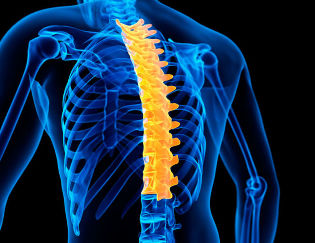
Osteochondrosisis a disease that affects the intervertebral discs and other tissues in the spine. Simply put, it compresses the vertebrae, which compresses the intervertebral discs.
IMPORTANT! If treatment is not timely, the vertebrae become less elastic and begin to pinch the nerve endings of the spinal cord. At this stage, swelling and severe pain appear.
There are four types of osteochondrosis, each named after the problematic part of the spine:
- cervical;
- lumbar spine;
- chest;
- collaborative.
Patients often do not know which specialist to turn to for the treatment of osteochondrosis. It should be said that thetherapist will refer the patient to a neurologist to clarify the diagnosis. If the case is difficult, you may need the help of a vertebrologist, who is a narrow specialist in the field of spinal diseases.
Osteochondrosis of the thoracic spine or thoracic chondrosis
Osteochondrosis of the thoracic region (or simply chondrosis) of the spine is a degenerative-dystrophic disease caused by changes in the intervertebral discs of the thoracic vertebrae.
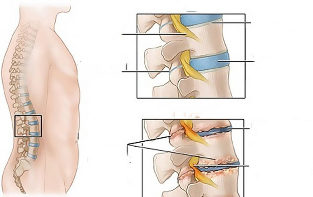
If we take a closer look, then the thoracic osteochondrosis first affects the bone tissue (vertebrae) and with the development begins to affect the cartilage tissue. As a result, osteochondrosis can lead not only to serious pain, but also to other diseases and sometimes even to disability.
Let's see how patients are diagnosed with osteochondrosis of the chest. Most patients have clear signs of the disease. In advanced stages, a specialist can determine the exact disease with a simple examination. In other cases, an X-ray or MRI exam is required for a full picture.
Degree of osteochondrosis of the breast region
It is important to say that there is no precise transition period from degree to degree, it all depends entirely on the individual characteristics of the human body.
There are four stages of thoracic osteochondrosis that are gradual:
- 1 degree. The onset of thoracic osteochondrosis, when the patient feels almost nothing. There is no severe or persistent pain and sometimes even no discomfort. Such sensations appear only after severe overload or physical exertion, but most often the disease does not manifest itself at all.
- 2nd degree.The second degree is associated with the destruction of the cartilage tissue and thus a decrease in the intervertebral spaces and the pinching of nerve endings, lymph vessels and even arteries.
- 3rd degree.At this stage, solid changes begin in the spine. Fixed means irreversible. For example, scoliosis, kyphosis, humps, and others develop.
- 4th degree.This is the final and most serious degree of the disease, which threatens with very serious consequences. At this point, the consequences are almost irreversible, as the changes in the spine become very serious.
Causes of thoracic osteochondrosis
Consider a list of the causes (predisposing factors) of the disease:
- pathological changes in the intervertebral discs;
- intervertebral hernia;
- impaired blood supply to the spinal cord;
- lack of nutrients in the body (for example calcium);
- severe spinal injuries;
- lifting weights or regular heavy loads on the spine;
- is constantly in an uncomfortable and unnatural position, without movement or physical activity (sedentary lifestyle);
- curvature of the spine.
Symptoms and signs of thoracic osteochondrosis
Each disease has its own symptoms and characteristic manifestations of pathology. Osteochondrosis is no exception, although with chest disease symptoms are often mistaken for heart or lung disease.
Let us consider a list of the main symptoms that are characteristic of chest chondrosis:
- Chest pain or burning.The main distinguishing feature of this particular type of illness is chest pain that occurs after strenuous physical exertion, when bending over to the side, when the patient is severely hypothermic or when the patient is in one position for a long time (e. g. while sleeping).
- Pain between the shoulder blades.Worsening pain is associated with raising the arms and making sharp bends on the sides.
- Dull painsthat occur when breathing deeply and exhaling.
- cough.The cough does not appear right away and when this symptom occurs, often patients start treatment with viruses, which is a big mistake.
- Discomfort between the ribs when walking. The symptom can appear even in the early stages of the disease.
- Shortness of breath.It becomes difficult for a person to breathe during exertion.
- Night sweats.At night, a person is in one position for a long time, which causes not only pain but also sweating.
- Numbness of the hands at night.Limbs can become numb, the symptom occurs in the second stage of the disease, when the vertebrae pinch the nerve endings and some blood vessels.
- temperature.It doesn't always occur and is most often accompanied by severe pain.
- Intercostal neuralgia. The patient feels stiffness and squeezing, as if an invisible corset is squeezing in the chest area.
- Increased blood pressure.
- panic attacks.Panic attacks are typical of advanced cases (stages 3 and 4).
- Pain in the esophagus.
- Disruption of the gastrointestinal tract.Osteochondrosis of the chest region and heart.
Osteochondrosis of the chest region and the heart
Thoracic osteochondrosis is often the cause of heart pain or extrasystole. The pain is either long-lasting (1-2 weeks) or severe and wavy. Often there is a rapid heartbeat along with the latter.
Patients often accidentally turn to cardiologists. However, research shows that this is just a side effect of another disease, which is why "heart" pills do not give the desired result.
Osteochondrosis during pregnancy and lactation in women
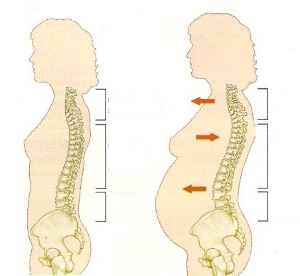
Chondrosis of the breast region often occurs during pregnancy or breastfeeding. Most often, it all begins during pregnancy, when a woman experiences heavy physical exertion. All of this, along with pregnancy, can cause curvature of the chest or lumbar area.
The situation is often aggravated during breastfeeding, as mothers are often in the wrong position for a long time when they are feeding a baby, being carried too long by the hands or being "rocked". Nevertheless, practically no one succeeded in starting the disease beyond the 2nd degree over the entire period.
VSD in osteochondrosis
Osteochondrosis is the cause of the development of vegetative-vascular dystonia. Experts say that VSD is not a disease in itself, but that this disease is always another problem that can have serious consequences overall.
VSD in this case can occur with incorrect posture during sleep, lack of physical activity and a sedentary lifestyle, obesity, etc. As a result of two diseases, the patient's blood pressure begins to rise, insomnia appears, numbness in the hands, impaired memory and much more.
Osteochondrosis and scoliosis
Scoliosisis a congenital or acquired lateral curvature of the spine. If we talk about congenital scoliosis, everything is clear. The acquired is interesting in this case because it appears most often for a reason.
Osteochondrosis of the thoracic spine can often be the cause of scoliosis, although the cause can be different. Scoliosis can develop in the third stage of the disease.
Spike chondrosis
"Spine" are osteophytes of the spine, ie the growth of bone tissue along the articular processes or along the vertebrae. They are called thorns because they often look like thorns that grow from the spine on x-rays.
This disease can be the cause of advanced osteochondrosis. This is a natural reaction of the body trying to increase the area of the vertebrae so that the displacement doesn't create as much pressure. It is the "thorns" that are most often the cause of the hardening of the cartilage.
Typical manifestations of thoracic osteochondrosis in women
The female body is different from the male in many ways, so in this disease it exhibits a number of characteristics. In women, many autonomic nerve fibers run in the chest area that lead to the limbs and internal organs.
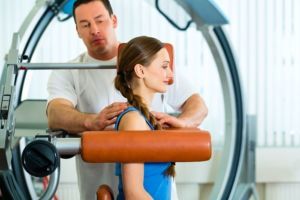
In women, chondrosis has a number of additional symptoms that often confuse patients.
This includes:
- heartache;
- abdominal pain;
- pain in the liver area;
- pain in the mammary glands;
- Sensation of numbness or coldness of the hands and feet.
Worsening of the thoracic osteochondrosis
Aggravation most often occurs in spring and autumn, when weather conditions change dramatically, the body is lacking essential vitamins, and human activity increases.
The exacerbation in thoracic osteochondrosis is divided into two types:
- Dorsago.Sudden sharp pain that occurs after being in an uncomfortable position for a long time. There is a feeling that a dagger has been thrust into the patient between the shoulder blades, which is very similar to a symptom of myocardial infarction. It is recommended to contact specialists in the hospital.
- Dorsalgia.Appears gradually and lasts 2-3 weeks. The pain becomes quite severe and permanent, and worsened by bending, breathing deeply, or staying in one position for a long time. It gradually goes away with exercise and drug treatment.
aggravation is a strong painful feeling that occurs not only when you are in one position for a long time or with a heavy load, but simply for no reason. The pain can spread to different parts of the sternum.
What should be done in the event of an acute attack of pain?
The most common seizures occur in people who have already consulted a doctor, have orthopedic mattresses and corsets, and know what physical therapy exercises are. Those who don't know about their illness often call an ambulance, which is also a good option.
Nevertheless, it is helpful to know some tips:
- Lie down and try to give the body maximum rest. When a person lies, the stress on the vertebrae is minimal. It is best to lie on your back or in a fetal position.
- Take pain medication if the pain is unbearable.Also ask your doctor for recommendations.
- Try to lie down as much as possible for the first few daysuntil the pain subsides.
- As soon as the pain subsides, you should get up more often and do movement therapy exercises.
How can the pressure of breast chondrosis be reduced at home?
It has already been said that high blood pressure is both a symptom and a side effect of the disease in question.
If the cause of high blood pressure is osteochondrosis, you can lower the pressure in the following ways:
- normalization of the blood supply to the brain.There are medications that should be taken regularly on the advice of a doctor.
- Relief of muscle cramps.Regular exercise therapy, as well as massages and physical therapy can handle this.
- Removal of tissue edema.Physiotherapy, massages and acupuncture are also very effective here.
How and how is osteochondrosis of the breast region treated?
Treatment for the disease in question usually takes a long time and involves a number of procedures. Some can be done alone at home, others only on the recommendation of specialists. Consider the different treatments.
Treatment of breast osteochondrosis at home
Basic home treatments:
- Physiotherapy exercises or at least simple exercises in the morning;
- special mattress;
- simple self-massage techniques;
- Herbal baths and rubbing to relieve pain and restore blood circulation.
Medicines and drugs
It is important to remember that pain relief and healing are two different things. You shouldn't endure and use pain medication all the time, you must take medication.
WARNING! It is very important to understand that osteochondrosis is a serious disease. Therefore, after a full diagnosis, it is necessary to take pills exclusively on the recommendation of a specialist!
Take a look at a list of the most popular medicines:
- painkillers.Must be taken in case of exacerbation.
- Hodroprotectors(restore cartilage tissue).
- injections and injections. Most often prescribed on the recommendation of a doctor, depending on the degree of the disease and the patient's disposition to certain drugs.
- ointments and gels.
- vitamin complexes.All vitamin complexes are suitable, it is important that they contain B vitamins.
Massage and manual therapy
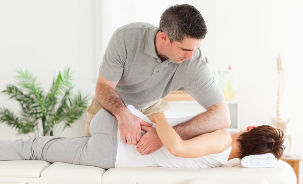
Massages are recommended for all types of osteochondrosis as they relieve tension and pain and restore the nervous and circulatory systems. However, it is important to understand that massage should be therapeutic.
Manual therapyis a procedure that is very similar to massage, but uses slightly different techniques. Manual therapy, with the hands of a specialist, works on the anatomical structures of the human body to remove restrictions and relax the muscles.
The peculiarity of manual massage is that it can be performed in different positions (lying on your back, not on your side, standing or sitting). During pressure, flexion, stretching or other techniques, the patient can often feel pain, but after the procedure you can always feel lightness and "freedom".
Acupuncture
Acupuncture is not available to everyone, but it is still very effective. The procedure will help get rid of discomfort and also start recovery processes.
In the early stages, acupuncture can be an important treatment tool so that drugs or other procedures to treat breast osteochondrosis are not required.
Physiotherapy methods
Electrotherapy, magnetotherapy, laser therapy, shock wave therapy, balneotherapy and vibration are widely used.
It is important to note that these procedures have a number of contraindications. You should therefore consult a specialist.
Physiotherapy and exercise
The main task of physiotherapy exercises for chest osteochondrosis is to strengthen the back muscles, the muscles of the shoulder complex and the respiratory muscles. Exercise therapy is recommended to be practiced in special groups, but you can do exercises at home. It is very important to choose exercises for a specific disease, and not to exercise during exacerbations.
Let's look at some basic exercises:
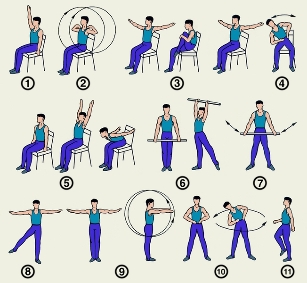
- Sit in a chair, lean your upper back against your back, and bend back as far as possible with your hands behind your head(it's importantthat the chest region works). Then the maximum forward bend is made. Repeat 4-5 times.
- Also, sit in a chair with your hands behind your head, take a deep breath, and then bend back 3-5 times, leaning your upper back on your back. Then repeat the forward bend and slowly exhale 4-6 times.
- Lie on your stomach, bend as far as you can in the chest area(but not sharply) and try to lift your head and legs as high as possible. Repeat 5-8 times.
- Standing, arms down, legs together.Raise your arms at the entrance, then bend back. After the arms are lowered and tilted forward as you exhale, you need to try to round your back.
There are many simple back exercises that can help treat illness and are great for prophylaxis or morning exercises.
Most of the exercises are simple and come from exercise therapy or yoga:
- An effective set of exercises with a stick. A simple set of exercises that will help you strengthen your back muscles and straighten your spine. The complex includes 5 basic exercises that must be performed daily.
- Exercises for osteochondrosis of the chest region with protrusion. In this case, it is recommended that the simplest exercise therapy exercises be performed, including back curls in the standing, lying, and sitting positions.
- Isometric exercises.
Isothermal exercises are rarely used. So let's look at some examples:
- Exercise "Karate".In a sitting or standing position, arms are bent at the elbows at a 90 degree angle, fingers are clenched into fists, back is straight and looking forward. Alternatively, each hand strikes itself.
- Exercise "Ballerina". When you are sitting in a chair, your hands are locked in front of you at shoulder height. Turns to the right and left are alternately carried out maximally (not sharp). If pain occurs during exercise, it should be stopped.
- Japanese greeting exercise. Hands are clasped from hand to hand in front of you at chest height. Pressure is applied with both hands for 30 seconds. After that you need a door. Place your hands on the edges of the opening and hold them in place. There is no need to push anywhere with your hands, just bend your hands forward (as if trying to pass the opening) and then back.
The author's gymnastics methods help reduce the manifestations of severe symptoms:
- 7 basic exercises by Alexandra Boninafor breast chondrosis.
- Bubnovsky authoring method.This is a complex treatment of osteochondrosis with special gymnastics, as well as special unique simulators. According to the Creator, using this method, the disease can be cured even without drugs.
- Gymnastics from cervicothoracic chondrosis by Dr. Popov.The main difference in this type of gymnastics is that it does not strengthen large muscles (like most other exercises), but rather small ones. This type of gymnastics is also known as micro-gymnastics.
- Exercises according to the method of Dr. Shishonin.This method consists of 7 simple but unique exercises that strengthen the muscles of the spine as well as the chest.
Treatment with folk remedies
Consider the most popular and effective folk remedies: herbal baths, rubs based on calendula and dandelion, tincture of chamomile, as well as tincture based on lemon balm leaves and orange peel. Various frictions are often used in folk medicine.
Ficus tincture with butter:
- Chop some ficus leaves and mix in a ratio of 1: 1 with butter.
- Then put the mixture in a warm oven for 1. 5 hours, then remove it and strain it.
- The cooled substance should be rubbed along the spine daily.
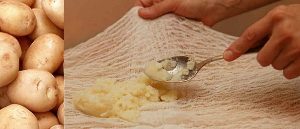
Potato compress is also effective for treating osteochondrosis in the breast:
- Take 4-5 potatoes and boil them, mash them and turn them into a thick puree.
- This puree is wrapped in several layers of the stamp and applied to the affected area of the spine.
- Then the compress is covered with a woolen scarf or a thick towel and kept until it cools.
- When the potatoes have cooled, remove the compress and rub the sore spot with alcohol. Then lie down under the covers. Repeat every other day before bed until the pain goes away.
Prevention of breast osteochondrosis
Prevention of thoracic osteochondrosis is an active lifestyle without undue stress. Proper nutrition, intake of vitamin and mineral complexes as well as regular medical examinations.
However, if we deviate from the general rules, we can distinguish between various features:
- Sleeping on an orthopedic mattress in natural positions.
- Keep your back straight when working from a seated position, get up regularly and warm up.
- Morning gymnastics, gymnastics classes, yoga and the like.
Such activities have a positive effect on the spine and the body as a whole. Therefore, regular moderate physical activity helps prevent spinal diseases.
In summary, osteochondrosis is a serious disease that must be treated. It is not recommended to self-medicate, especially if the pain becomes a constant companion. But it is also important to remember that prevention is the best treatment. Therefore, a healthy lifestyle is the key to success and good health!





































